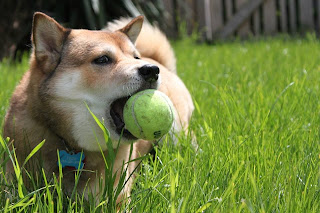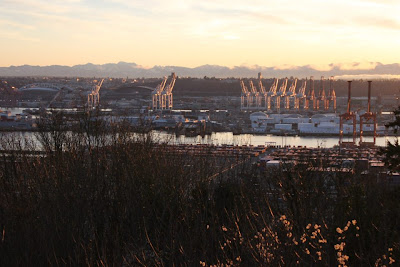"Can you make me
Twitter-famous” or as referenced occasionally by the younger crowd “
Instafamous?” I often hear this question from friends and some brands. The rise of social media platforms in the last few years has spawned the idea of instant validation and a podium to express point of views and beliefs. While there is a bit of validity to this idea, taking a step back and examining social media closer, the truth is much like other communication platforms – success doesn’t happen overnight and the “gurus” and “mavens” of the digital world often obtain their status after months if not years of dedicated cultivation and practice.
Last week I had the opportunity to listen to "
Sleepless in Sreeattle - A Night of Social Media," a lecture hosted by
UW Comm Lead at the
Seattle Art Museum. The talk featured renowned social media expert
Sree Sreenivasan, Chief Digital Officer at the
Metropolitan Museum of Art and former professor at the
Columbia School of Journalism. He’s been named one of
AdAge's 25 media people to follow on Twitter and one of Poynter's 35 most influential people in social media. In his current role Sree oversees a team of 70 people on the digital side - video, apps, mobile, social, geolocation, web, data, e-mail, and more. Sree describes his current role as telling “a million stories about a million pieces of art to a billion people.”
The talk focused on how to get the best use out of time invested online and how to build more fans and followers and how to do so in a smart, strategic, and sustainable manner. As Sree joked near the beginning of the talk, the premise alone is enough to warrant a hefty conference fee type of price tag. Yet thanks to
Hanson Hosein, Sree, SAM, and UW Comm Lead it cost less to attend than a drink at Starbucks.
Wide spread use of social media has created an interesting challenge, how do you get heard in the midst of all the shouting? Sree provided a powerful answer to the question, “Where everyone is a content generator, those who are trained will rise to the top.” Social media has created an unprecedented opportunity to be heard but it’s not as simple as turning on your smartphone and snapping a few pictures on Instagram or sending some tweets. To get to the expert level, consider Sree’s ABC and SAA rule:
Always be collecting; share as appropriate.
An excellent example of sharing as appropriate arose early in the talk as we all paused for a moment of silence to open up the lecture in honor of those who lost their lives in the
Charlie Hebdo shooting. This brief act of respect stemmed from Sree’s earlier pledge to temporarily stop tweeting and posting following the shooting. His intention was to do his part to reduce the amount of “noise” being produced that day and allow the truly important information to rise to the top. As he put very eloquently during the talk, “don’t promote yourself when the world is falling apart.”
It’s no secret but social media similar to a resume should always be up-to-date and reflect the best most current you. Relevant accomplishments or tasks even if temporary should be part of your digital footprint. For photographers this might mean highlighting one of your best photos or for writers it might be a link to your most recent post. This tip applies to all social networks but is particularly important for sites like LinkedIn or Twitter which are often used as a basis for your digital identity.
Whether it’s
Anthony Weiner’s dick pic or the epic
lewd tweet by US Airways. Social media provides users the power to engage with larger audiences but it can also be the gateway to trouble.


With this in mind, it’s important to be deliberate, strategic, and smart in all social media usage. Sree mentioned during the talk he spends 3 to 6 minutes composing his tweets. Why? “It’s the only thing that could potentially get him fired or divorced,” Sree joked.
Social media at times seems much removed from reality but as we’ve seen countless times since its invention, it has real world impact and consequences.
It’s tempting after signing-up for your first social network to jump atop the soap box and start spouting your perspective and point of view. Social media is powerful beyond its broadcasting capabilities however. One of the elements which has made social media such a unique medium in modern day is its ability to facilitate listening and create conversations. With this in mind it’s important to consider those on the other end of your bullhorn. Pausing for a second you’ll notice everyone all of a sudden has a bullhorn similar to yours, even if it’s spouting a point of view which deeply conflicts with your own.
Here lies the true challenge of becoming a social media “expert” or “guru,” it’s all tied to authenticity and people.


Often what’s common sense in real life is common sense on social media. Like the real world, social media has etiquette. Sree spent a good portion of his talk commenting on it and how it affects your performance online. One of his most salient tips, “don’t be an ask.”
Similar to how in real life, you can’t walk up to someone and just start asking for favors or requests. You can’t do it on social media either, despite the countless random LinkedIn invitation requests you might get that say "Since you are a person I trust, I wanted to invite you to join my network on LinkedIn.” To avoid being an “ask” on social media consider the following Sree tips:
- Don’t just cold call or ask for favors
- Build relationships with people online
- Reshare and Retweet (RT) other people’s content but also add value
- Don’t just promote yourself; be a pointer to other people’s content
Instead of being an “ask,” strive to be authentic and connect. As I’ve personally experienced, sometimes you can meet people who will transform your life and perspective. A few great folks I’ve met online include
@bethevans,
@seattletallpopp,
@lukobe,
@leah_motz.
Sometimes connecting for no particular reason is the best way to start and can lead to unlocking opportunities and conversations you never considered.
Ultimately social media is an exercise in being human and continuing to learn and grow from interactions with others. As someone who’s been active on social media for a number of years, it was refreshing to hear Sree share tips on how to succeed on digital platforms and most importantly for my point of view be a better communicator and person. So while it’s possible to become “Instafamous,” social media at its core is about so much more than being an internet celebrity, it gives people the power to connect, engage in meaningful dialogue, and create relationships outside of their immediate network.
Special thanks to UW Comm Lead, SAM, Hanson, and Sree for the presentation. Curated tweets from the presentation below along with a link to Sree’s presentation.





























